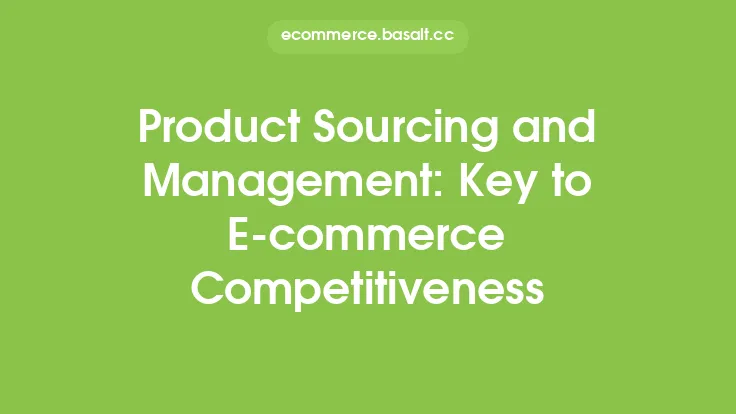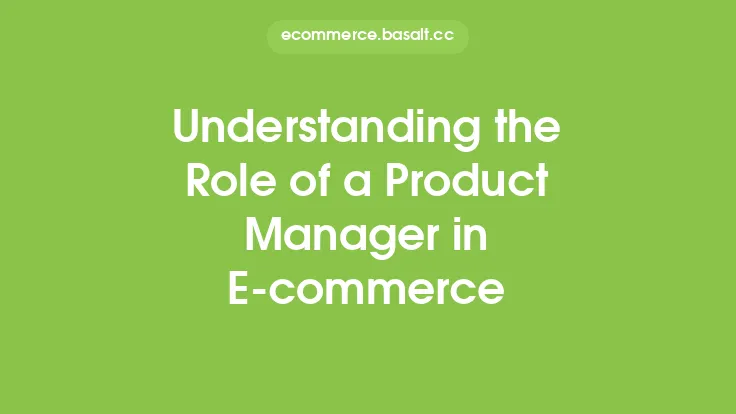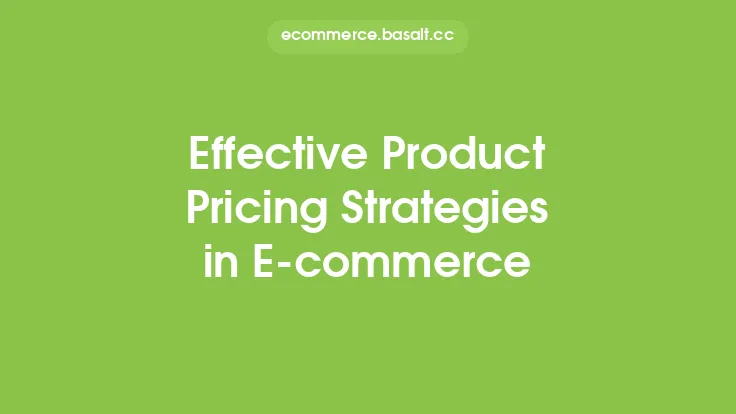In the realm of e-commerce, managing the life cycle of a product is crucial for businesses to stay competitive and profitable. Product life cycle management (PLM) is a systematic approach to managing the entire life cycle of a product, from its conception to its eventual retirement. This involves understanding the different stages a product goes through, from introduction to growth, maturity, and decline, and making informed decisions to maximize its potential and minimize its costs.
Introduction to Product Life Cycle
The product life cycle is a concept that describes the stages a product goes through, from its introduction to the market to its eventual decline. The life cycle is typically divided into four stages: introduction, growth, maturity, and decline. During the introduction stage, a product is launched and introduced to the market, and the focus is on creating awareness and generating interest. The growth stage is characterized by increasing sales and market share, as the product gains popularity and becomes more widely accepted. The maturity stage is where the product reaches its peak in terms of sales and market share, and the focus shifts to maintaining market share and defending against competitors. Finally, the decline stage is where the product's sales and market share begin to decline, and the focus is on managing the product's exit from the market.
Product Life Cycle Management Process
The PLM process involves several key steps, including product development, product launch, product growth, product maturity, and product decline. During the product development stage, the focus is on designing and developing a product that meets the needs of the target market. This involves conducting market research, gathering customer feedback, and testing and refining the product. The product launch stage involves introducing the product to the market, creating marketing campaigns, and generating buzz and excitement around the product. The product growth stage is where the focus is on increasing sales and market share, through strategies such as expanding distribution channels, improving product features, and enhancing customer service. The product maturity stage involves maintaining market share and defending against competitors, through strategies such as product differentiation, pricing strategies, and customer retention programs. Finally, the product decline stage involves managing the product's exit from the market, through strategies such as discontinuing production, clearing inventory, and transitioning customers to alternative products.
Benefits of Product Life Cycle Management
Effective PLM can bring numerous benefits to e-commerce businesses, including increased revenue, improved profitability, and enhanced customer satisfaction. By understanding the different stages of the product life cycle, businesses can make informed decisions about product development, marketing, and sales, and can optimize their resources to maximize returns. PLM can also help businesses to identify opportunities for growth and expansion, and to mitigate risks and challenges associated with product development and launch. Additionally, PLM can help businesses to build strong relationships with customers, by providing them with products that meet their needs and exceed their expectations.
Tools and Techniques for Product Life Cycle Management
There are several tools and techniques that can be used to support PLM, including product information management (PIM) systems, enterprise resource planning (ERP) systems, and customer relationship management (CRM) systems. PIM systems can help businesses to manage product information, such as product descriptions, images, and specifications, and to synchronize this information across different channels and platforms. ERP systems can help businesses to manage product development, production, and distribution, and to track inventory levels, sales, and customer orders. CRM systems can help businesses to manage customer interactions, such as sales, marketing, and customer service, and to build strong relationships with customers.
Best Practices for Product Life Cycle Management
To get the most out of PLM, e-commerce businesses should follow several best practices, including conducting thorough market research, gathering customer feedback, and testing and refining products. Businesses should also focus on building strong relationships with customers, by providing them with products that meet their needs and exceed their expectations. Additionally, businesses should be flexible and adaptable, and should be willing to pivot or adjust their strategies as market conditions change. Finally, businesses should prioritize data-driven decision making, and should use data and analytics to inform their product development, marketing, and sales strategies.
Challenges and Opportunities in Product Life Cycle Management
Despite the benefits of PLM, there are several challenges and opportunities that e-commerce businesses should be aware of. One of the biggest challenges is the rapid pace of change in the e-commerce market, which can make it difficult for businesses to keep up with the latest trends and technologies. Another challenge is the increasing complexity of global supply chains, which can make it difficult for businesses to manage product development, production, and distribution. However, these challenges also present opportunities for businesses to innovate and differentiate themselves, through strategies such as sustainable sourcing, social responsibility, and customer-centricity.
Future of Product Life Cycle Management
The future of PLM is likely to be shaped by several trends and technologies, including artificial intelligence (AI), blockchain, and the Internet of Things (IoT). AI can help businesses to analyze customer data and preferences, and to develop personalized products and marketing campaigns. Blockchain can help businesses to track inventory levels, sales, and customer orders, and to build trust and transparency with customers. IoT can help businesses to develop smart products that can collect and transmit data, and to create new revenue streams and business models. By embracing these trends and technologies, e-commerce businesses can stay ahead of the curve and achieve success in the competitive and rapidly changing e-commerce market.





